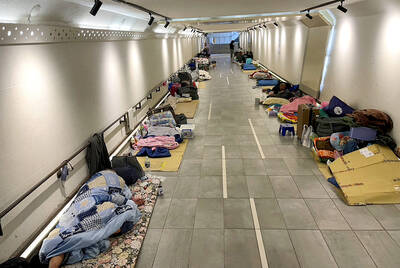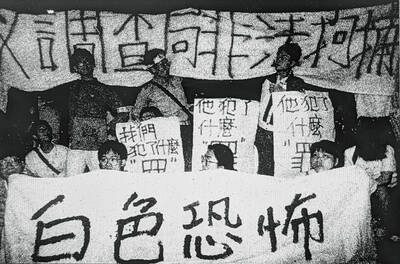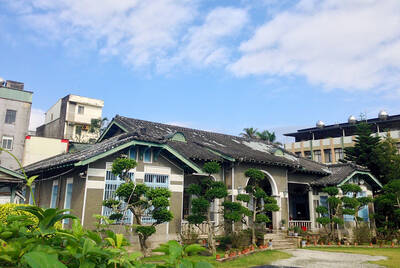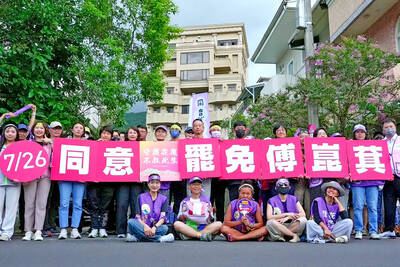When a world famous, multimillionaire engineer who holds 440 patents and owns two jets, two helicopters and a private island tells you to worry, it’s probably time to worry. And Dean Kamen is a very worried man.
Quoting HG Wells, he tells me: “I think the world is in a race between catastrophe and education.” We’re in the corner office of his hi-tech research company, DEKA, surrounded by Einstein memorabilia and cartoons of his most famous invention, the Segway electric scooter. “In most cases, catastrophe is winning.”
“The polar ice caps, swine flu, energy, the environment: almost every problem I can think of that’s going to bite us in the ass in the years to come needs extraordinary technical achievements,” says the man whose own achievements include a robotic prosthetic arm and a wheelchair that can climb stairs. “More than ever, the world needs good engineers. However, the pool of talent is shrinking not growing.”
That’s not all. According to Kamen: “Today’s children are the first generation in which it is highly probable that their average quality of life, and education level, will be less than it was for their parents.”
This is not the Dean Kamen I came to see. I came to see the visionary technologist who dropped out of college to develop the world’s first mobile insulin pump, the proud inventor who envisaged millions of Segways seething through the world’s cities, the iconoclast engineer who, disappointed with teenagers idolizing sports stars, created his own sport based on competitive robotics. (Don’t laugh: the FIRST championship attracts nearly 17,000 school teams from around the world.)
Instead, I got a man whose passion for technology seems increasingly swamped by frustrations with global realpolitik. Take his work on water and power systems for developing nations. “50 percent of all human diseases are due to water-borne pathogens,” says Kamen. “For the few billion people that are sick and dying on a daily basis, the idea that we’re going to build them a municipal water infrastructure in the next year, or even the next decade, is profoundly naive. So we set out to develop technologies that can solve the problem of giving people clean water without needing to transform their environment.”
Cue DEKA’s integrated water purifier, codenamed Slingshot. “Here’s a box with two hoses,” says Kamen. “Dip one in anything that looks wet — an ocean full of salt, a well full of arsenic, a pond full of cryptosporidium, giardia and fecal matter — and out of the other one comes pure drinking water. It’s portable so it can be carried into a village, and it’s cheap [US$1,500] and productive enough so that you can make enough water to share the cost over a few hundred people.”
Kamen doesn’t pretend Slingshot is home to any ground-breaking discoveries: “We didn’t invent vapor compression. We didn’t invent the distillation process. We didn’t invent any fundamental understanding of the Second Law of Thermodynamics. But we did make a lot of little inventions to make a small scale, highly reliable device that frees us from having to measure what’s wrong with the input water. There’s a lot of technology in there that we’re quite proud of.”
He’s just as proud of his Stirling engine (a device to convert heat into mechanical energy, first conceived of in 1816), which produces up to 1kW of electricity from virtually any fuel source. “In a trial in Bangladesh, they put cow dung into our machine. It was a multiple win: small, distributed, scalable and using fuel that is otherwise toxic. Whether you burn it or not, cow dung evolves methane, which is 21 times worse than carbon dioxide as a greenhouse gas. So why not capture it and turn it into useful heat and electricity?” Working together, the two devices could boost living standards and save lives across the world. Instead, the prototypes are languishing in DEKA’s labs. “In order to put them in volume production, you need a well-defined market and a distribution strategy,” explains Kamen. “The problem is that most of our commercial partners — even the giants — do not do a lot of business in the underdeveloped parts of the world. This is not a shortage of technology. It’s a shortage of courage, vision, awareness: a lot of human things.”
It’s this lack of long-term thinking that infuriates Kamen. “Our technology is being squandered on quick buck applications. More and more we seem to be defaulting to the short term. Do we need to double again the rate at which we move data so two kids can play games with even more realistic violence? Or should we be ensuring everyone has at least some access to the Internet? The world doesn’t need the next generation of videogames.”
It might not need them but it seems to want them, which is arguably the opposite of what happened with Kamen’s ill-fated Segway Transporter. Kamen thought that his nippy, balancing scooter would “be to the car what the car was to the horse and buggy.” He whipped up a media frenzy before its launch in 2001 and invested heavily in factories capable of producing 40,000 units a month. Eight years later, sales of Segway have only just passed the 50,000 mark.
In April, Segway and the bankrupt US carmaker General Motors unveiled a two-man, semi-enclosed update called PUMA (Personal Urban Mobility and Accessibility) with a top speed of 56kph and a range of up to 35km. This time around, Kamen is almost dismissive of the new vehicle: “The day we made the first Segway, the very first one, we drew pictures of enclosed ones. Going back and tweaking things to make them 5 percent better or 3 percent cheaper? There are whole industries who know how to do that very well. Our position is been there, done that, did it, changed the world, move on.”
Talking of moving on, Kamen is now wary of hyping — or even mentioning — his future projects, but he does let one slip. “At DEKA, we’re looking at a couple of ways to be in the energy business. We’re working on solar now and I think the world of energy is going to see a lot of changes soon.”
When pressed for more details, Kamen clams up, or rather changes the subject to North Dumpling, his 0.03-hectare private island off the coast of New York, which he refers to in deadpan as an independent kingdom. “Dumpling is completely carbon neutral,” he says. “We have solar panels on every building, a 10kW wind turbine, our own little Stirling engine for backup power, burning only local fuel. We’re making our own water out of the ocean with Slingshot. And we are now developing a foreign aid program to help the US.”
A man who wants to re-engineer the whole world for sustainability, one country at a time? At last, here’s the Dean Kamen I came to see.

From the last quarter of 2001, research shows that real housing prices nearly tripled (before a 2012 law to enforce housing price registration, researchers tracked a few large real estate firms to estimate housing price behavior). Incomes have not kept pace, though this has not yet led to defaults. Instead, an increasing chunk of household income goes to mortgage payments. This suggests that even if incomes grow, the mortgage squeeze will still make voters feel like their paychecks won’t stretch to cover expenses. The housing price rises in the last two decades are now driving higher rents. The rental market

July 21 to July 27 If the “Taiwan Independence Association” (TIA) incident had happened four years earlier, it probably wouldn’t have caused much of an uproar. But the arrest of four young suspected independence activists in the early hours of May 9, 1991, sparked outrage, with many denouncing it as a return to the White Terror — a time when anyone could be detained for suspected seditious activity. Not only had martial law been lifted in 1987, just days earlier on May 1, the government had abolished the Temporary Provisions Effective During the Period of National Mobilization for Suppression of the Communist

When life gives you trees, make paper. That was one of the first thoughts to cross my mind as I explored what’s now called Chung Hsing Cultural and Creative Park (中興文化創意園區, CHCCP) in Yilan County’s Wujie Township (五結). Northeast Taiwan boasts an abundance of forest resources. Yilan County is home to both Taipingshan National Forest Recreation Area (太平山國家森林遊樂區) — by far the largest reserve of its kind in the country — and Makauy Ecological Park (馬告生態園區, see “Towering trees and a tranquil lake” in the May 13, 2022 edition of this newspaper). So it was inevitable that industrial-scale paper making would

Hualien lawmaker Fu Kun-chi (傅?萁) is the prime target of the recall campaigns. They want to bring him and everything he represents crashing down. This is an existential test for Fu and a critical symbolic test for the campaigners. It is also a crucial test for both the Chinese Nationalist Party (KMT) and a personal one for party Chairman Eric Chu (朱立倫). Why is Fu such a lightning rod? LOCAL LORD At the dawn of the 2020s, Fu, running as an independent candidate, beat incumbent Democratic Progressive Party (DPP) lawmaker Hsiao Bi-khim (蕭美琴) and a KMT candidate to return to the legislature representing